There are not many places where you can get away from it all just an hour from a major city. You can here. With its alpine meadows, herbaceous mountains and turquoise bays, Provence, from the Mountains to the Mediterranean, is a sensory delight. Pont de l’Etoile - Plan d’Aups Ste Baume The bus drops you at your start point, the ancient stone bridge of Pont de l’Etoile, straddling the River Huveaune. The village itself fits the image of a relaxed provencal community, and yes, things do get done around here… but all in good time.
There is the odd idiosyncrasy, like the “Maison de Celle qui Peint” – an extraordinary three-dimensional mural by local artist Danielle Jacqui – yet when it comes to restaurants and boulangeries, the aromas of garlic, oil and fresh bread are reassurance that everything will live up to expectations. On leaving the hamlet and church of St Pierre les Aubagne, a patchwork of small holdings with a sugar loaf background promise a good day’s walking.

Early starts are good at this time of year, but already the sky is burnished blue with a forecast of over 30ºC – make sure you stop by the boulangerie for your picnic lunch and PLENTY of water.

The plain of Aubagne falls quickly behind and the murmur of the Marseille to Toulon highway is obliterated by the small birds of the hedgerow. The pitch of the path steepens. In the distance, France’s second city shimmers in the heat haze and the sky and sea merge into an Azure horizon.

Climbing the ridge above the Vallon St Clair, the rebuilt chapel of the saint is visible over your shoulder. Such religious buildings are a feature of this landscape, usually they are sited with a view to contemplate, to achieve clarity with a calm mind – appropriate for one called Saint Clair.
Ancient water cisterns also mark the region, although they are hard to spot, however their modern counter parts make useful landmarks. Buried almost flush with the ground and naturally filled by rain and ground water, these containers are part of Provence’s firefighting infrastructure, linked by a network of access roads to provide replenishment points for fire vehicles. Great for firefighters in a hot spot – when numbered and marked on the map, pretty good for hikers too.

The broad and exposed fire track meets the D2 public road at the Col de l’Espigoulier. At 723m above sea level, this pass is well-known amongst professional and top class amateur cyclists for its annual TMCP (Tour for Professional Mediterranean Cyclists) event and for having featured in the Tour de France. Here, the hiker crosses the tarmac road to head towards the Dents de Roque Forcade and the isolated plateau of the Plan des Vaches. The heat of the day is concentrated by the south facing bowl of the cliff formation, the scent of wild rosemary and thyme hangs in the air and an immense blue sky dazzles off the white rock. At the Col du Cross the highest point of the day is reached at 873m, then the path becomes fragmented on approaching the Col de Bertagne, a myriad of animal tracks and sunny glades amongst low trees. It is heaven for the lepidopterist. The butterflies’ pastel colours are delightful, their tumbling flight fills the air and their names are evocative; cupido osiris, gonepteryx cleopatra. The senses become overloaded and finding exactly the right path is tricky.

If in doubt, the walker should find the stone and brick Peace Monument, clearly marked on the IGN map as a tiny square outlined in black, and relocate the yellow flashes of the path to Plan d’Aups from there. The route down to Plan d’Aups is straight forward, if a little loose and rocky. The old Chemin de Fer, that once served a lignite mining operation on the south side of Pic de Bertagne, runs a direct course past the ruined building of the Brasque that was its terminus until 1922. The “brown coal” would travel on St Zacherie for electricity generation – the walker stops just a few hundred metres distant, for rest at the very welcome Hotel Lou Pebre d’Ai, in Plan d’Aups.
Plan d’Aups de Sainte Baume - Circle

Walk out of your hotel and the colours of Provence begin before your feet have warmed up your socks. The green of the crop is peppered with cayenne red and mustard yellow in a chromatic mix of natural balance that seems to reflect in the culinary skills of the region. No wonder chef’s “formule du jour” tasted so good last night.

The trees take over from the pasture, an early morning sun dapples the path and illuminates gossamer spider-threads with glistening yellow light. The first walkers of the day feel the forest against their skin, a woodwind quartet of bird song is mellow on the ears, the air is cool and envigorating. It is nothing less than a joy to be walking the path between the beech, maple and, of course, cedar – this is the Vallon de Betton, or Valley of Cedars.

Steeper and rockier becomes the path, the woods thin out and limestone outcrops are more frequent. Glimpses of what you are about to experience are revealed – and then you burst out onto the top.

It is barely mid morning and barely mid June, but the temperature is rising fast. The sun penetrates the skin yet on the knife edge of the ridge, the body is cooled by a breeze from both sides. Ahead, in the near distance, the double peaked mountain is the Joug de l’Aigle, or Yoke of the Eagle, measured at 1148m. Behind you, the brash and out of place communications tower and radar station occupy the Pic de Bertagne at 1041m – these are the two ends of the Massif de la Saint Baume.



The view is exceptional and stretches to your left as far as the Gorges du Verdon and to your right, to the sea at La Baie de La Ciotat. The yellow flashes give way to the white over red markings of the GR98 as the tarmac road terminates at the military radio station.

Progress slows on the rough surface as the way markers are carefully followed. Navigation is not an issue but dedicated volunteers maintain the best route through these rocks and most of us will only walk it once, why ever would you rush it? Details on the map are compressed by the extreme gradient of the Massif’s northern flank and the chapel you encounter is the Chapelle de St Pilon … a good place for a picnic it is too.
The legend of Sainte Marie Madeleine takes form here as inside can be seen the statue of the saint herself. The principle shrines of this celebrated lady are found in Provence, although modern historical opinion regards her story as a composite of the lives of several different Marys. The legend is that she miraculously landed near Arles, having been hounded from the Holy Land with Lazarus and other followers in a small boat without sail or rudder. During the Middle Ages, this fable appealed greatly to both the kings and commoners of the region. After her acclaimed conversion of Gaul to Christianity, she withdrew to self-exile in a Provencal cave, or “baumo” in the local dialect, at the foot of the cliffs of the Massif de Ste Buame. Whatever may be the individual’s belief, the setting is impressive.






A few hundred metres beyond the chapel, the path descends to a saddle in the ridge, the Col du St Pilon. Here the route leaves the ridge line and follows a stone stairway that was likely dressed for royalty in former times. The path’s gradient is demanding and its surface crumbles but it improves by the Chapelle des Parisiens. Built in 1626 by a King’s councillor with responsibilities for taxation, it is named after the Parisian clique who were so frequently hosted by the councillor at his home in Aix en Provence.

Further shrines line the pilgrim’s progress on wide, well trodden paths beneath a green canopy of magnificent trees. On approaching the Saint’s Sanctuary, signs request decorum and silence, and the Grotte itself appears high above you, built into the cliff face. Straining the neck for a difficult photograph into the sun, the building is endowed with an etherial light. However the accoutrements of modern convenience detract from the imposing facade that now fronts the original cave. A little later a crucifix marks the end of the “Lieu de Silence” and the earthen avenue gives way to a forest track, as the secular observer wonders at the intense belief in the legend. Leading onwards, through the comforting reality of the cool forest, the narrow, uneven path requires concentration. It passes an old hermitage, somewhat sullied by modern visitation, and then the enigmatic “Grotte aux Ouefs”, a vertical, fissure-like cave of substantial proportions. 
And why the name? Were dinosaur eggs really found here, or was it a pagan venue for fertility rites? The choice could be either or neither, but you may visit – just take a head torch and watch your footing. The long tramp back to Plan d’Aups initially follows the “Chemin du Roys”, a pilgrimage route for kings and popes which leads to the Sanctuary of Marie Madeleine. Breaks in the trees offer fine views over your destination. The building at centre-right is the “Hostellerie" run by the Dominican order, primarily for those visiting the Sanctuary. Further to the left, following the line of the road, it is just possible to make out tonight’s accommodation, the excellent “Maison Rouge”.

After a hot bath and with the feet up, the Massif looks almost as good from the very spacious hotel bedroom as it did from right up there.
Then the sun goes down on a fine day’s walking. 
Plan d’Aups de Sainte Baume - Gemenos

Retracing the Chemin de Fer was anticipated to be something of a chore – no, not a bit of it. Plan d'Aups and the Sacred Mountain put on a good display in farewell. Having regained the Peace Monument, the route leads around the base of the huge rock slab of the Pic de Bertagne which dominates the Vallon des Crides like the All Seeing Eye from a JRR Tolkien saga.

From here, the terrain to the South West opens out into a huge bowl, bounded to the West by the Collines Blanches, to the North by the Dents de Roque Forcade, and to the East by Pic de Bertagne and the Falaise de Cugens. The area within is a magnificent rainforest which, in its upper, drier reaches, is cloaked in miniature varieties of oak, beech and holly, liberally spiced with rosemary, lavender and thyme. 


The southerly aspect focuses the sun’s rays, the air crackles in the heat and the aromas of the herbaceous plants that brush the knees are strong. Butterflies dance frantically in the super-heat. Such is the brilliance of the light that the camera lens is overwhelmed and aberrations appear in the digital image which, although unintentional and invisible to the human eye, very definitely reflect the atmosphere of the valley.

On the tramp south, the major driving force of this ecosystem is hard to find: despite its name, the Torrent du Fauge is either hidden, dried up or, most probably, underground. It is at the first sign of human settlement that it becomes obvious, gurgling beneath the small stone-arched bridge at the entrance to the Abbaye de St Pons. This Cistercian abbey was founded by Bishop Rainier of Marseille in 1205, for nuns of the Order, becoming the fourth of the Provencal Sisters in 1223. The availability of constant running water provided power for the abbey’s mills and agriculture and, in combination with its importance as a religious centre, the estate became a significant economic focal point. Imposing walls and majestic trees create a cool underworld away from the sweltering sun. Abandoned by the nuns in 1406, there is a sadness about the building that must once have looked out over thriving fields to the Collines Blanches beyond.

The river runs on, permanent now but still little more than a stream. It passes a ruined water mill, a 16th Centuary paper factory and Chapelle de St Martin before leaving the Parc de St Pons. Threading its way through a large public picnic area, the tame waters seem to get lost in the streets and public buildings of the pleasant town of Gemenos. Whiling away time over a cold “pression”, waiting for the bus to Cassis and pondering the name of the river, the conclusion is inevitable – there must be times of the year when the Torrent du Fauge is not so tame.
La Ciotat - Cassis
With the heat wave set to continue, the taxi arrives at seven thirty for the short ride to La Ciotat, a city associated with the invention of the motion picture. Here the Lumiere Brothers first screened their film of “The Arrival of a Train at Ciotat Station” and urban myth records that some of the audience leapt out of their seats at the apparition bearing down upon them.

Disembarking at the end of Avenue Mujel, overlooking shipyards that were a major industry twenty years ago, the climb uphill threads through the back lanes of the city. The view behind clearly illustrates the line of the rock formation, cut through by erosion or isolated by the sea – the high points of Les Trois Secs, Le Bec de l’Aigle and L’Ile Verte stand in a row, pointing across the Baie de Ciotat. Ahead, the little white dot of the semaphore station seems a daunting goal but the path zigzags to soften the gradient and within a hour of setting out, you share the same view as the peak.

Does it look familiar? Across the waves of terrain, rising like the snout of a leviathan from a grey-green ocean, is the rock face of the Pic de Bertagne, leading on to the Col du St Pilon and the Joug de l’Aigle. The Massif de la Sainte Baume – you might just have walked most of it.

Collectively this stretch of coast is named Cap Canaille but it includes the Falaise Soubeyranes and La Grande Tete, and it is difficult to delineate between the features. Collectively it is regarded as the highest sea cliff in France at 394m above sea level. Without doubt it is the Chemin de la Semaphore that unites the region into an internationally acclaimed attraction. At nine in the morning, the early start pays dividends – the air is fresh and briny, the sea is barely rippled and the gentlest of zephyrs caresses the skin. The path is empty, it is all yours.

The uneasy truce with the sun ends and the temperature quickly rises to over 30ºc. The path never strays far from the contour, yet there are intermittent short, sharp climbs and descents. The footing varies from loose rounded stones to hard dusty rock, so at times care is necessary but it is not difficult. Time for a break. In the shade of a rock pillar, an up draught from the sea provides a cool spot for a picnic and the view feels like one from an airliner’s window. Gazing down at the tiny white speck that is a yacht at sea, one automatically reaches for the seat belt.

The National Park of the Calanques had been placed on restricted public access today and an assessment of the ground conditions was being made for fire risk. An opportunity like that was not going to go waste and the Sapeurs-Pompier and Securite Civile wheeled out their machinery for some training. The Bombadier 415 “Superscoop” is a custom designed turboprop for aerial emergency work. Its nickname stems from its ability to land on water to replenish its tanks, and return to the fire front with the quickest of turnarounds. Although not fast, this aircraft of twenty plus metric tonnes displayed surprising agility as it manoeuvred into daredevil dives in practice water bomb attacks.

Numerous fire appliances could be seen on the slopes above Cassis. On the Chemin de Semaphore, where the road meets the cliff and the path, a group of firefighters from Lyon were buckling up to undertake abseil training. Cliff top environments attract their share of tragedy and where the sapeurs-pompiers prepared to descend the rock face was placed a forlorn posy of dried flowers. “Un coup de vent” was the cryptic explanation supplied to the obvious question – tragic, a life lost to a gust of wind. There was an air of discipline and confidence to the pose struck by this strapping bunch of young men, and with justification, new recruit training is tough, about half do not pass.  The scenery just went on and on…
The scenery just went on and on…




Nearing the end of the cliff top path, the Route de Cretes, the D141 public road, brings the crowds to the peaks and the early morning solitude is dispelled absolutely. It’s nice. Your fellow walkers are almost exclusively French, cordial and prepared to listen to a foreigner mangle their language and respond with information and advice. The route peels away from people and car parks to head inland above the vineyards of the famous Cassis wine and the lanes loved by the likes of Virginia Woolfe and her “Bloomsbury” set. Ah, the harbour front at last...

...the muted radio plays music with an arabic note, the cuisine tempts would be gourmets with tendrils of mouth water smells. What shall we have?
Cassis – Col de la Gardiole & back

There is a problem today. The National Parc des Calanques has been classified as fire risk red and the public are permitted access only between 0600 - 1100. The notice is posted on the internet the night before and is backed up with very obvious road signs. The Prefecture de Bouches du Rhone means business, miscreants face a €135 fine. There is only one option for today’s walk – breakfast at 0530.

The compensation for the loss of sleep is a beautiful moon. It is not cold but the body feels a distinct frisson on skirting the Quai de Bateau as the town sleeps, the Plage de Bestouan is utterly still and not even a cat stirs amongst the well to do mansions on the peninsular of Port Miou.

Cap Canaille dominates the Baie de Cassis as dawn breaks and then you are out of town. 
At the face of the old limestone quarry, the source of the famous “white stone” of Cassis of which the plinth of New York’s Statue of Liberty is a renown example, the moon gives way to the sun. This is the entrance to the Calanques National Park, France's tenth and most recent, having been opened to the public in April 2013. It is a remarkable achievement that such biodiversity, which includes the protected Bonnelli's eagle, brown meagre, grouper, rare dolphin and marine turtle, coexists so closely with as large a conurbation as Marseille. The deep coastal indentations that give this region its name are tightly regulated and the principle means of access for the public is on foot.

The tussle between day and night approaches its conclusion as yellow sunlight streams into the entrance of the Calanque de Port Miou.

A short while later, the walker gazes at the still shaded Calanque de Port Pin, where the silent yachts are carefully moored to seaward of the regulation marker buoys. The last easily accessible calanque from Cassis demands some effort to reach and the path veers away from the GR98/51 at this point. The blue trail, narrow, rocky, ascends above Port Pin and around the Pointe d’en Vau. Faithfully leading onward with constant blue markers, arrestingly close to precipitous cliffs, the trail offers the walker tantalising glimpses of their goal.

Rejoining the GR98, the terrain plunges steeply into the Vallon d’en Vau. Some of the steps down are on the verge of a scramble, rounded rocks roll beneath the feet and dust makes hard surfaces slippery. However trekking poles significantly improve security, and to the valley floor is only perhaps three hundred metres.

The prize, the Calanque d’en Vau…. is surely worth it. It could be deemed that the remainder of the hike is an anticlimax but that would be unfair. The track at the bottom of Vallon d’en Vau is wide and even, the sun catches the towers and castellations of rock whilst leaving the walker in the cool. The view from Col de la Gardiole is expansive and the sight of the massed water craft of Port Miou in full sunlight is not to be missed.




The end of the tour . Wow, what colour, what aromas, what flavours, just sensational. 

A little celebration is called for and what else would be appropriate but the wine of the region.
What an adventure, Thank you, MacsAdventure.  "Parrafin Pathfinder" John walked Provence: the Mountains to the Mediterranean with Macs Adventure. For all self-guided walking and cycling in Provence, visit macsadventure.com
"Parrafin Pathfinder" John walked Provence: the Mountains to the Mediterranean with Macs Adventure. For all self-guided walking and cycling in Provence, visit macsadventure.com









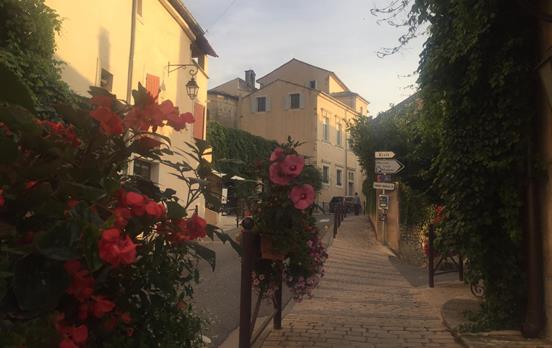


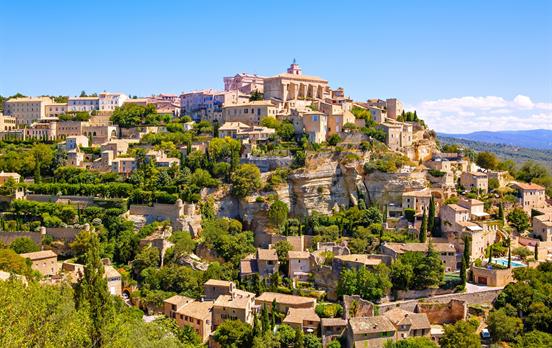
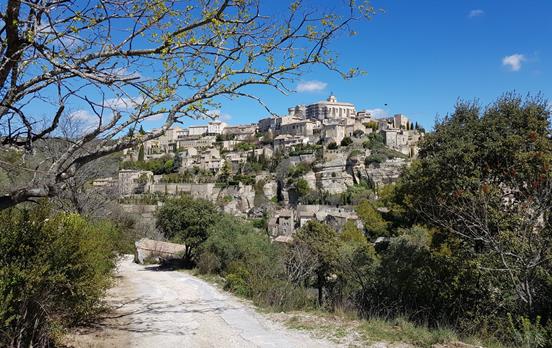

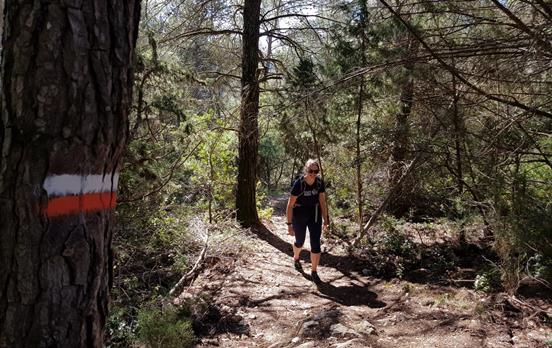


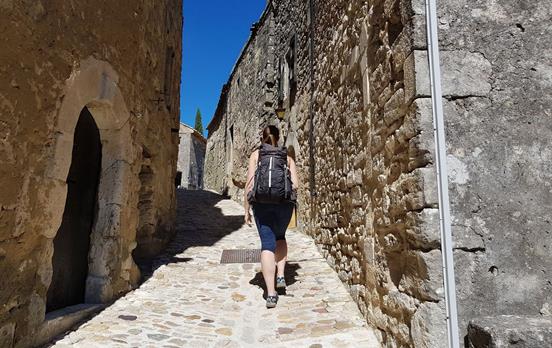
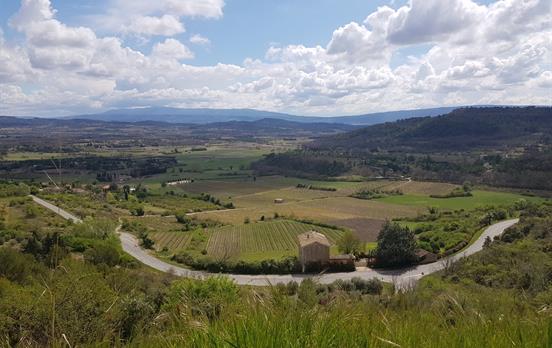
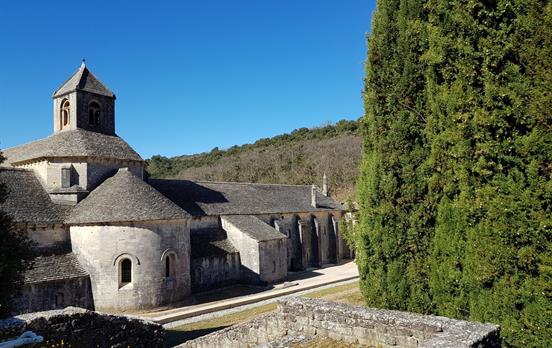
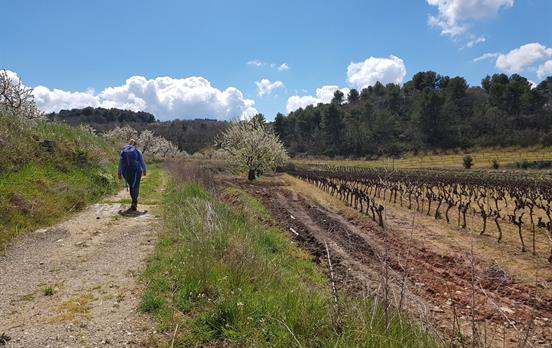

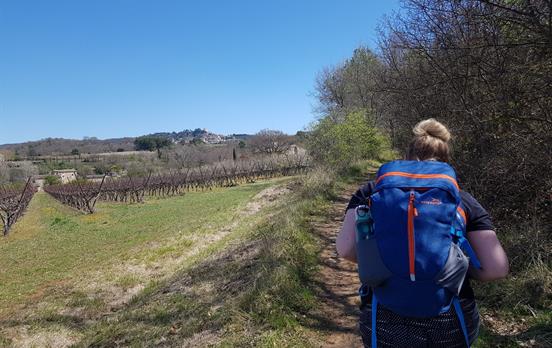
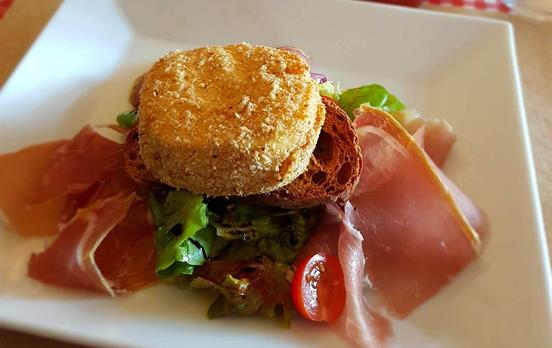
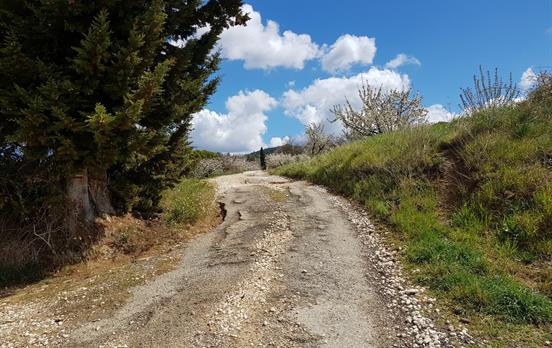
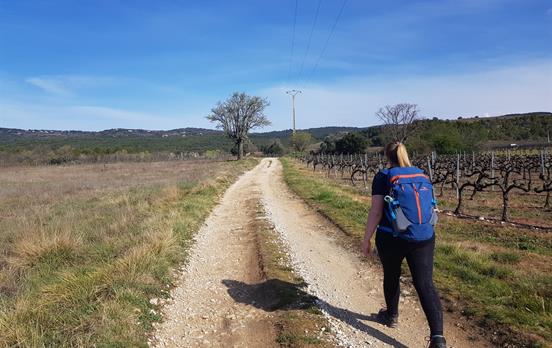

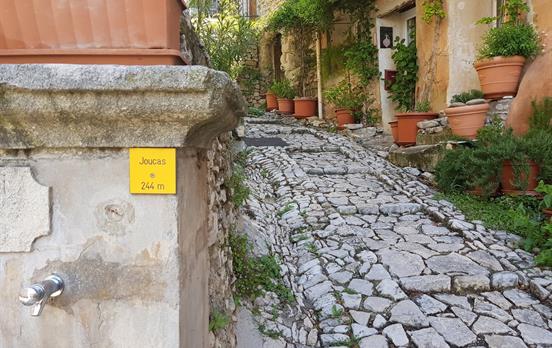

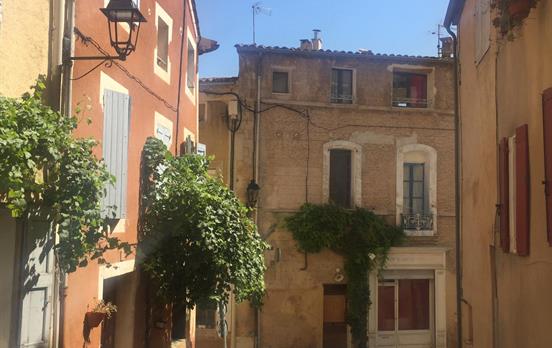
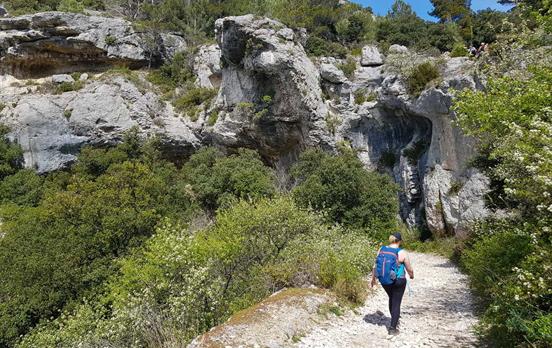
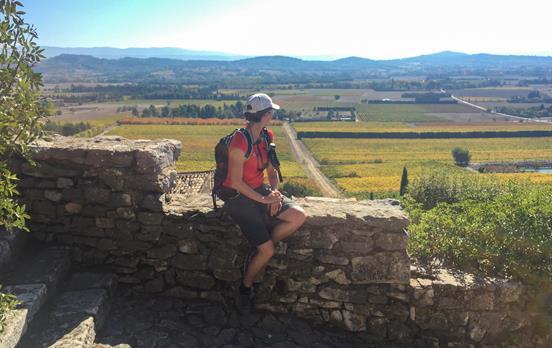
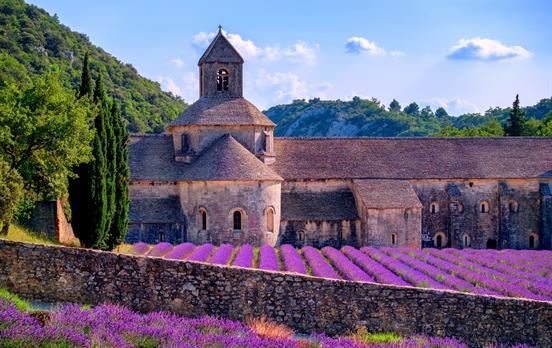

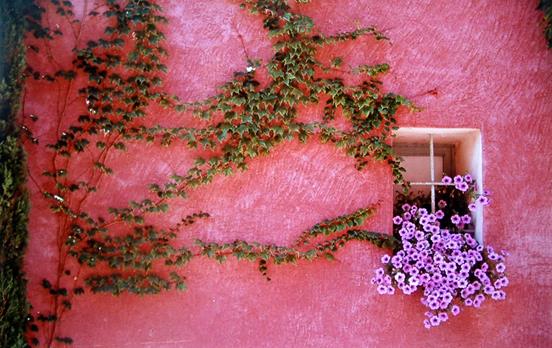

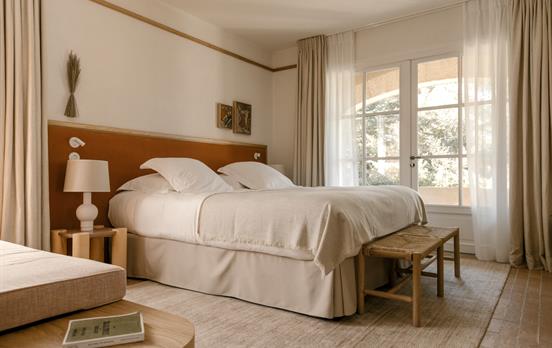




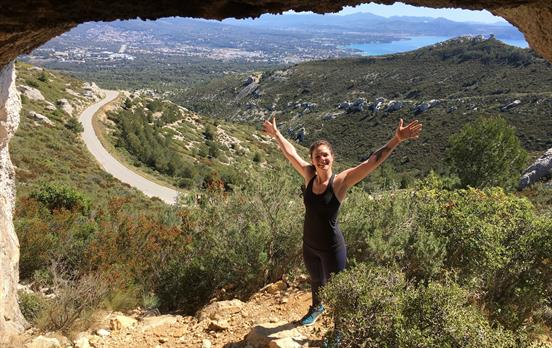








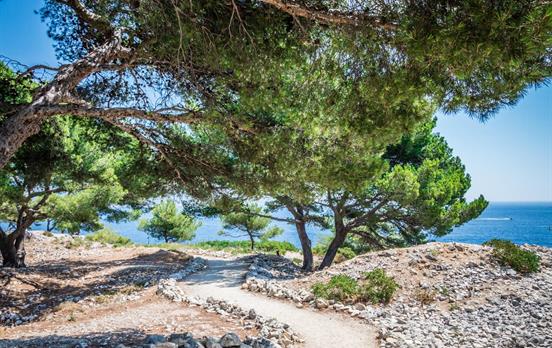
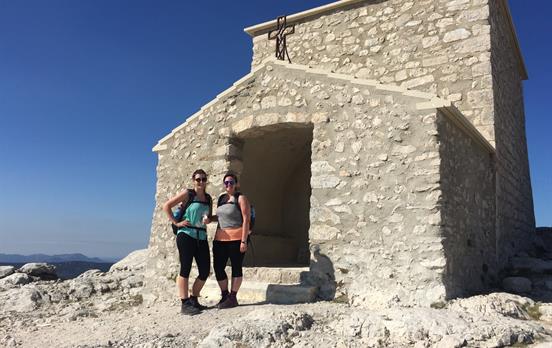


 Australia
Australia New Zealand
New Zealand South Africa
South Africa European Union
European Union